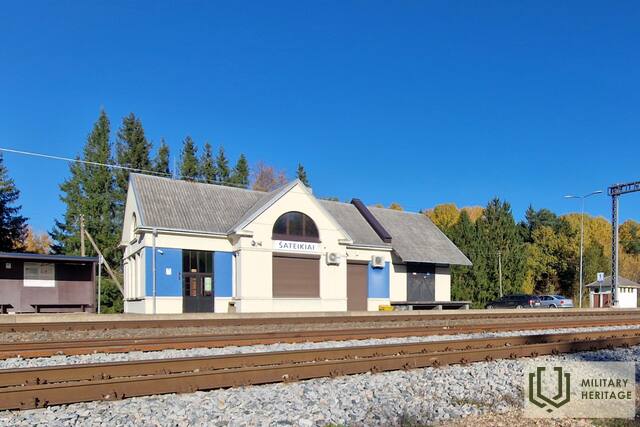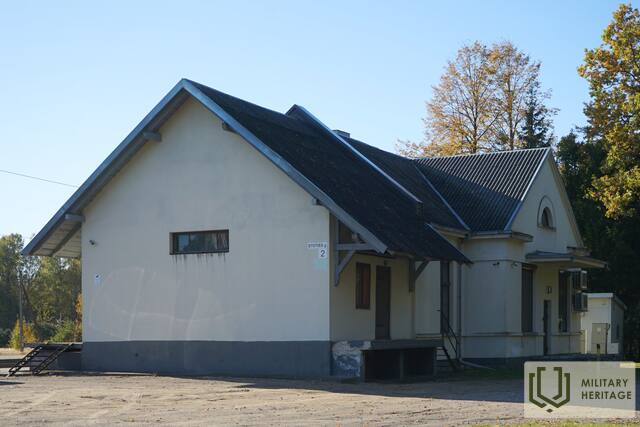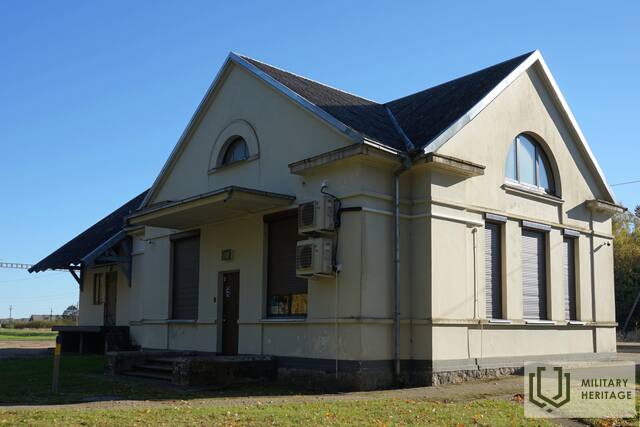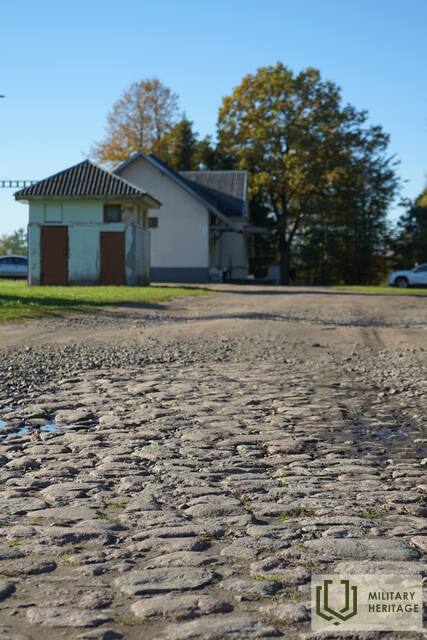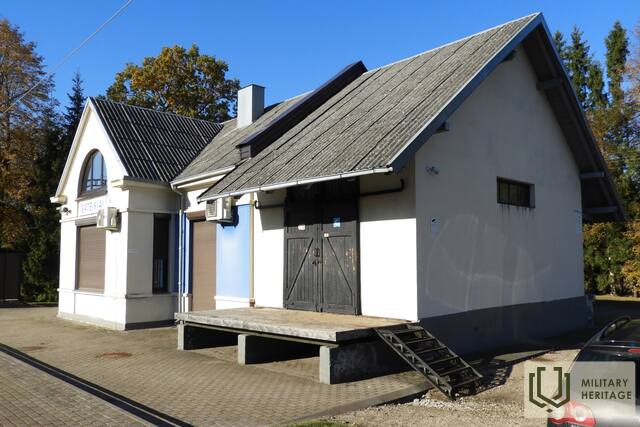Šateikiai railway station Infrastructure

Šateikiai railway station is built on the Kužiai-Telšiai-Kretinga railway line in the Plungė district.
In 1918, after the Republic of Lithuania declared its Independence, the formation of railway infrastructure began: an administration system was created, and preparatory courses for railway workers were organized. In 1923, the Cabinet of Ministers decided to build the Kužiai-Telšiai-Kretinga route. The densely populated Samogitia region was chosen, which did not yet have adequate connections with Klaipėda and other centers.
The stations were built after the rail network had already been laid and using standardized architectural designs. The passenger hall of Šateikiai station was built in a typical design, with 1 floor and a roof, and a warehouse was also located in the same building.
During the Cold War, Šateikiai railway station also became important in the military industry. In the period 1960-78, Šateikiai ground-based and Plokštinė underground thermonuclear missile launch bases operated in the Šateikiai and Plokštinė forests. Both during their construction and later, during the period of operation, construction materials, weapons and everything else were transported by train to Šateikiai and Plungė railway stations. It is believed that a huge arsenal of nuclear weapons was deployed at the Šateikiai ground-based base. This is confirmed by the fact that in 1962, missiles were transported to Russia from the Šateikiai ground-based missile base, Šateikiai and Plungė railway stations, and later by ship to Cuba (Cuban Crisis).
Šateikiai railway station currently operates as a regular railway station, with passenger and freight trains arriving and departing. Only fragmentary stories have survived, linking the station's history with the activities of former military missile bases.
Used sources and references:
https://zemaitijosnp.lt/ekspozicijos/
Dabašinskienė, I. (2013). Architecture of the first railway in the interwar Lithuania. Mokslas–Lietuvos ateitis/Science–Future of Lithuania, 5(3), 309-315
Related timeline
Related stories
K. Meškauskas' memories of the Plungė district missile bases
The former missile bases in the Plungė district hide an impressive history of the Cold War - from the secret transportation of rocket fuel at night to the construction of underground shafts with artificial pressure. The memoirs of doctor Kajetonas Meškauskas reveal little-known details about the activities of the Soviet military and the lives of the builders. His story is not only about the base, but also about a man who found himself in the middle of history.
In the footsteps of nuclear weapons in Šateikiai Forest
In the period 1960-1978, in the forests of Šateikiai village, in the Plungė district, a ground-based missile launch base operated, where medium-range thermonuclear missiles R12U were deployed. After the missiles were transported, the 384th High-Power Artillery Brigade was deployed at the base. At its disposal were self-propelled 203 mm caliber howitzers 2S7 "Pion" and a variety of other weapons, which cost lives.
In the footsteps of nuclear weapons in Šateikiai Forest
In the period 1960-1978, in the forests of Šateikiai village, in the Plungė district, a ground-based missile launch base operated, where medium-range thermonuclear missiles R12U were deployed. After the missiles were transported, the 384th High-Power Artillery Brigade was deployed at the base. At its disposal were self-propelled 203 mm caliber howitzers 2S7 "Pion" and a variety of other weapons, which cost lives.




